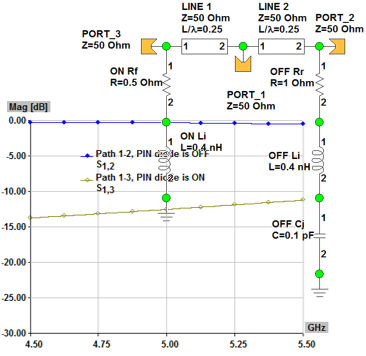Linear Transistor Modeling Using Equivalent Circuits
This note shows accurate transistor characterization for amplifier design using WIPL-D Microwave, providing a complete environment for implementing lumped circuit equivalent transistor models that deliver reliable S-parameter data. A low-power packaged GaAs HEMT is modeled, with intrinsic and extrinsic elements partitioned and their physical basis briefly explained. The calculated S-parameters are highly accurate, enabling designers to overcome limitations of sparsely tabulated transistor data and determine optimal biasing points for specific applications. WIPL-D Microwave ensures the flexibility to implement schematics of any commonly used linear transistor model, supporting efficient and precise amplifier design workflows.













